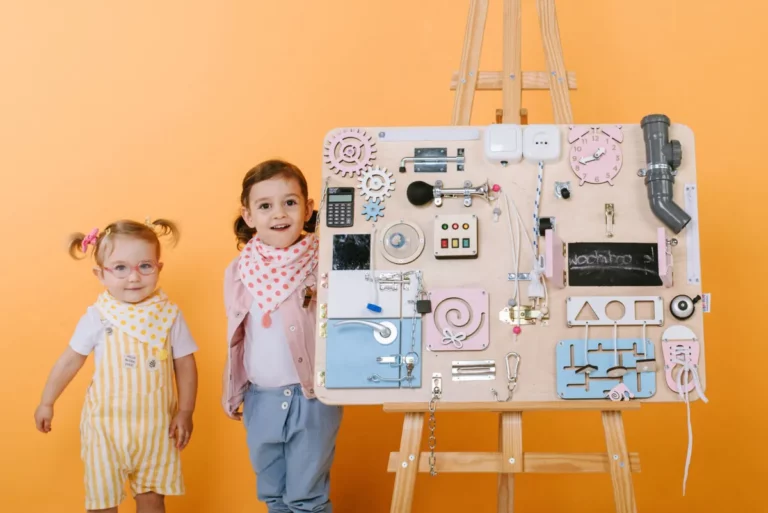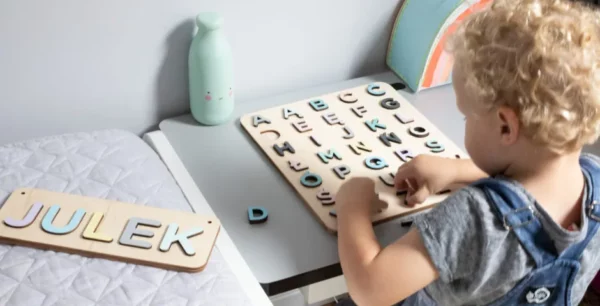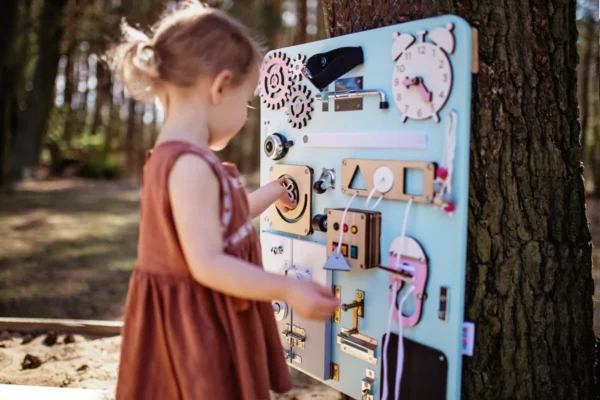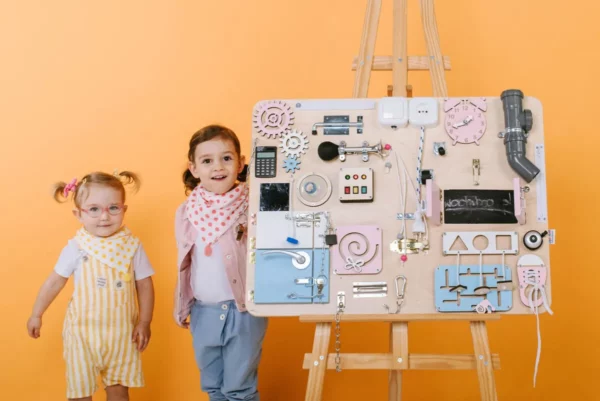Key concepts in child development – comments from therapist Katarzyna Korczyk
Every parent exploring their knowledge of child development has come across new terms. Some of these are not obvious to a first-time parent. To deepen your knowledge and provide your toddler with suitable conditions for development, it’s worth drawing on professional expertise. With help comes Woobiboo and Katarzyna Korczyk, a hand therapist and nursery teacher, who explains key parenting concepts.
Fine motor skills, eye-hand coordination, self-care activities or the development of specific senses – sounds complicated? The child requires not only care, but also support in proper development. Learn about key concepts in child development that are important for appropriate toddler’s education.
The first and often-occurring concept is fine motor skills, which is nothing more than activities performed using the fingers and hands. Perfecting them takes place from the earliest years of a child’s life. First it is the ability to grasp a toy, then to stack blocks and paint, and finally it is precision skills such as lacing shoes or having a proper grip on a marker or pen. Fine motor skills practice can be done through activities such as moulding with plasticine, zipping and unzipping fasteners, finger painting, and so on.
The second noteworthy concept is hand-eye coordination, which is the ability to synchronise movements with what we perceive visually. It develops from the first days of a child’s life. Proper eye-hand coordination is essential for many daily independent activities, as well as manipulative ones – drawing, painting and sports activities. Children whose coordination is less well trained may have problems with dressing themselves, catching a ball or throwing to a target. In addition, there may be problems with balancing on one leg, artwork and, at an older age, even writing. We can practise eye-hand development by, for example, putting together puzzles, lacing shoes and throwing balls into a box.
Self-care, on the other hand, is related to getting dressed, so it is nothing more than putting on clothes yourself, undoing and fastening buttons, Velcro and other fasteners, as well as zipping and unzipping. We can practise them during dress-up play – imitating the act of putting on different pieces of clothing or even dressing and undressing dolls. Playing with the Woobiboo board can definitely help here too.
On a daily basis, the child also develops all their senses. The first, the sense of touch, can be developed through the use of toys with different textures – e.g. smooth, rough, soft, hard. This is extremely important because children who come into contact with a variety of textures, masses and forms experience a great deal of sensory stimulation, which has a positive impact on their development.
The sense of hearing, on the other hand, is developed through playing with elements that make sounds, e.g. a ball with a bell, a bicycle trumpet and all kinds of musical instruments. The child learns to distinguish between loud and quiet sounds, as well as pleasant and unpleasant sounds in their perception.
Equally important, the sense of sight can be developed through toys of different shapes, sizes and colours. It is a sense that needs to be developed from the child’s birth, as an infant’s eyesight is very imperfect. The child can only see sharply from a distance of about 30 cm and has difficulty distinguishing colours – they are unable to perceive depth. Instead, they see contrasts, especially the juxtaposition of white with black or red.
Understanding concepts closely related to child development makes it easier to provide them with appropriate conditions and educational opportunities. It is essential for the toddler to practise their skills from the first months of life. The elements on the Woobiboo boards are responsible for the development of the senses and coordination, allowing the child to play and educate at the same time.





